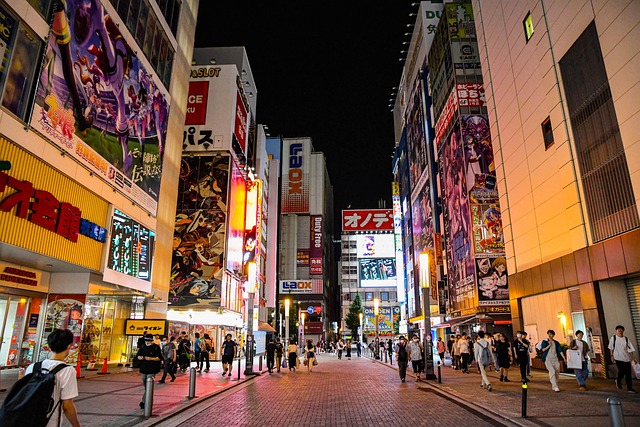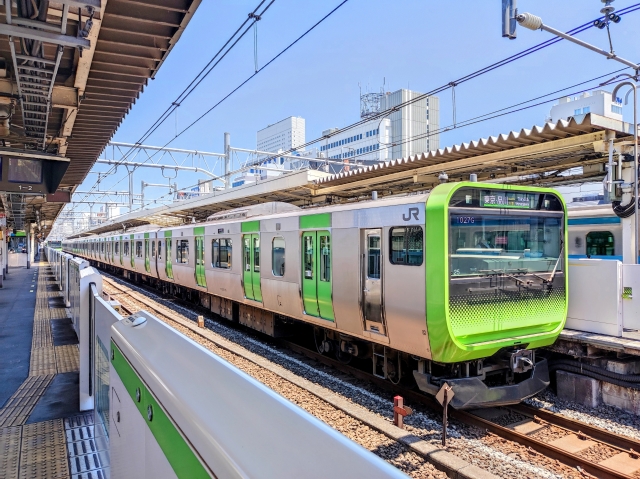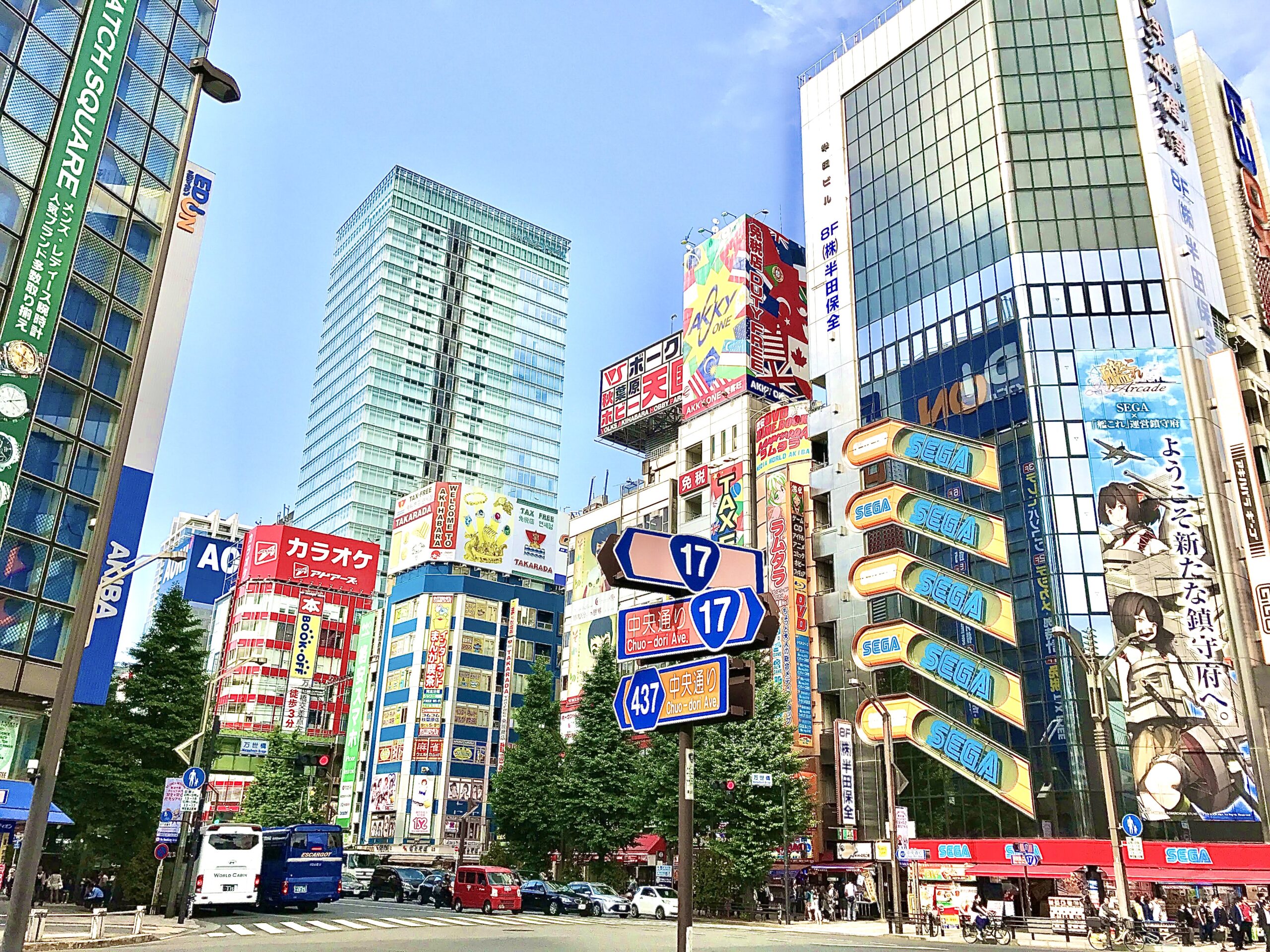Among the many neighborhoods of Tokyo, few are as colorful, energetic, and culturally unique as Akihabara. Often referred to as “Electric Town,” this district is world-famous as the mecca of electronics, anime, manga, and gaming culture. Located in the heart of Tokyo, just a short train ride from major hubs like Tokyo Station and Ueno, Akihabara is both a shopping paradise and a cultural phenomenon. For tourists, it offers an experience that blends futuristic technology with the playful imagination of Japanese pop culture.
Visiting Akihabara feels like stepping into an anime and gaming paradise — from neon lights to endless shops, it’s a must-see spot in Tokyo!
From Electronics Hub to Pop Culture Capital
Akihabara’s history as an electronics center began after World War II. Small stalls and shops sprang up in the area, selling radios, parts, and household appliances to a nation eager to modernize. By the 1980s, it had earned the nickname “Electric Town,” attracting hobbyists, engineers, and everyday consumers searching for gadgets and components.
In the late 1990s and early 2000s, Akihabara underwent a cultural shift. As anime, manga, and video games gained global popularity, the district embraced this new identity, transforming itself into a hub for otaku culture—a term that refers to enthusiasts of anime, manga, and gaming. Today, Akihabara is a unique blend of its past and present: visitors can still find electronic shops alongside massive stores dedicated to Japanese pop culture.
Shopping for Electronics
While Akihabara is now known primarily for anime and manga, it remains an excellent place to shop for electronics. Stores like Yodobashi Camera Akihabara, a massive multi-story complex, sell everything from the latest cameras and laptops to home appliances and toys. Smaller specialty shops tucked into side streets cater to enthusiasts searching for rare components, vintage radios, or computer parts.
For tourists, browsing these stores is an adventure in itself. Even without buying, the sheer variety of gadgets on display reflects Japan’s reputation as a leader in innovation and technology.
Anime, Manga, and Gaming Paradise

The biggest draw for many visitors to Akihabara is its status as the epicenter of anime and manga culture. Towering stores such as Animate and Mandarake offer floor after floor of books, DVDs, figurines, posters, and cosplay items. Collectors travel from around the world to hunt for rare merchandise or limited-edition goods available only in Japan.
Gaming fans will also find themselves at home in Akihabara. Multi-story arcades run by companies like SEGA or Taito are filled with claw machines, rhythm games, fighting games, and VR experiences. These arcades are lively and often stay open late, making them a favorite for both locals and tourists. Retro gaming enthusiasts can also find shops dedicated to classic consoles, cartridges, and memorabilia.
The World of Maid Cafés
No visit to Akihabara is complete without experiencing a maid café. These themed cafés are staffed by waitresses dressed in maid costumes, who serve customers with playful performances, songs, and dances. Instead of simply ordering food, guests are treated to a full entertainment experience, where meals are decorated with cute designs, and staff members may perform chants or games at the table.
For some, maid cafés are quirky and fun; for others, they may feel surreal or even overwhelming. Either way, they represent a cultural phenomenon that originated in Akihabara and has since spread worldwide. Other themed cafés in the area include those based on popular anime series, video games, or even concepts like samurai and ninjas.
Akihabara and Otaku Culture
Akihabara has become synonymous with otaku culture, which is celebrated rather than hidden in this district. Shops sell cosplay outfits, rare figurines, and collectibles, while entire buildings are dedicated to dojinshi (fan-made manga) and niche merchandise. Street advertisements feature anime characters, and music from popular series plays from loudspeakers, immersing visitors in a world where fantasy meets reality.
Twice a year, Akihabara also plays a role in events like Comiket (Comic Market), the world’s largest convention for self-published works. During these times, fans from across Japan and abroad flock to Akihabara before or after the event to shop, socialize, and celebrate their shared passions.
Seasonal Events and Pop Culture Collaborations
Akihabara regularly hosts special events and collaborations tied to popular anime, manga, and video game franchises. Temporary pop-up cafés, themed exhibitions, and promotional campaigns bring in waves of visitors eager to experience limited-time attractions. For example, a café might be redecorated to celebrate the anniversary of a famous series, offering exclusive menus and merchandise.
The streets of Akihabara also transform during festivals, with cosplay parades, stage performances, and outdoor markets. These events highlight the district’s role as a living, breathing center of contemporary Japanese pop culture.
Exploring Akihabara Beyond Shopping
While shopping and entertainment dominate the area, Akihabara has other attractions worth exploring. The Akihabara UDX and Akihabara Crossfield complexes are modern landmarks that combine offices, restaurants, and event spaces. Visitors can also find shrines nestled among the skyscrapers, such as Kanda Myojin Shrine, which has become popular with tech enthusiasts and anime fans alike. The shrine even sells talismans for electronic devices, symbolizing the blend of tradition and modern life unique to Tokyo.
Accessibility and Location

One of the reasons Akihabara is so popular with tourists is its accessibility. The neighborhood is served by Akihabara Station, a major hub on the JR Yamanote Line, Sobu Line, and the Tokyo Metro Hibiya Line. From here, visitors can easily walk into the heart of the district, where streets are lined with glowing billboards, colorful advertisements, and endless shops.
Akihabara is also close to other attractions such as Ueno Park, Akihabara’s neighboring Kanda district, and Asakusa’s Senso-ji Temple, making it a convenient stop on any Tokyo itinerary.
A Unique Energy
What sets Akihabara apart from other districts of Tokyo is its unique energy. It is loud, bright, and unapologetically devoted to the worlds of technology and fantasy. For first-time visitors, the sheer volume of sights and sounds can be overwhelming, but for many, it is also thrilling. The district embodies Tokyo’s ability to constantly reinvent itself, blending history, commerce, and subculture into something entirely its own.
Conclusion: A Must-Visit for Travelers
Akihabara is not just a place to shop; it is a cultural experience. From electronics and arcades to anime stores and maid cafés, it offers something for everyone, whether you are a dedicated fan of Japanese pop culture or simply curious about its global influence.
For travelers, Akihabara provides a window into a side of Tokyo that is playful, imaginative, and distinctly modern. Walking its streets, one cannot help but feel the excitement of discovery—whether that means finding a rare manga volume, trying a quirky themed café, or simply soaking in the dazzling atmosphere.
Visiting Akihabara is like stepping into a different world, one that reflects both Japan’s technological achievements and its boundless creativity. It is a district that continues to inspire, entertain, and surprise, making it a must-see destination for anyone exploring Tokyo.



comment